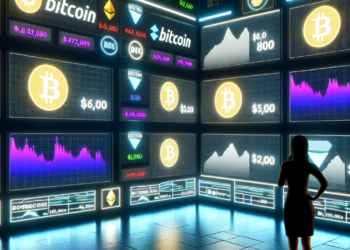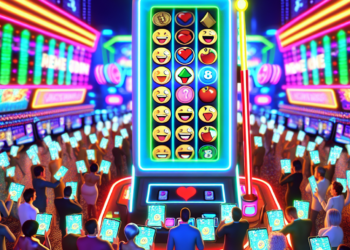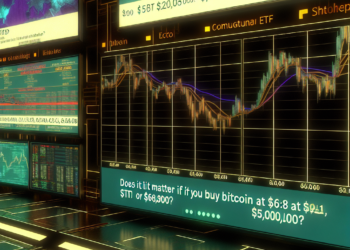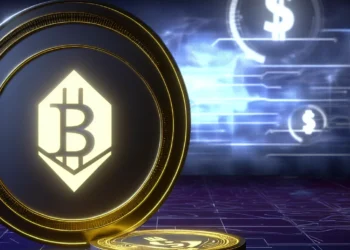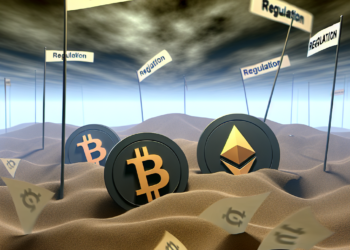The Rise of NFTs What You Need to Know in 2024
So, you’ve probably heard the buzz around NFTs lately, but what exactly are they? Non-fungible tokens, or NFTs, have been making waves in the digital world, offering a new way to buy, sell, and trade unique digital assets. But what sets them apart from traditional cryptocurrencies like Bitcoin or Ethereum? Let’s dive into the world of NFTs and uncover what makes them so intriguing.
Imagine owning a one-of-a-kind piece of art, a rare collectible, or even a unique piece of digital content. NFTs make this possible by using blockchain technology to create a digital certificate of ownership for a specific item. This means that each NFT is unique and cannot be replicated or exchanged for another asset. In essence, NFTs are like digital certificates of authenticity that prove ownership of a particular item.
Unlike fungible tokens like Bitcoin, where each token is interchangeable with another, NFTs are indivisible and cannot be exchanged on a one-to-one basis. This makes them ideal for representing digital assets that are one-of-a-kind or limited in quantity. From digital art and music to virtual real estate and even tweets, NFTs can represent a wide range of digital assets, each with its own unique value.
But how do NFTs actually work? NFTs are created, bought, and sold on blockchain platforms that support the Ethereum blockchain. Each NFT is minted using a smart contract, which is a self-executing contract with the terms of the agreement between the buyer and seller directly written into code. This ensures that the ownership of the NFT is securely recorded on the blockchain, providing a transparent and tamper-proof record of ownership.
One of the most exciting aspects of NFTs is their potential to revolutionize the way we think about ownership and value in the digital age. By allowing creators to monetize their digital creations in new and innovative ways, NFTs are opening up a whole new world of possibilities for artists, musicians, and content creators. Whether you’re a digital artist looking to showcase your work or a collector looking to invest in unique digital assets, NFTs offer a new way to buy, sell, and trade digital goods.
Understanding NFTs and Blockchain Technology
Now that you’ve dipped your toes into the world of NFTs, let’s dive a little deeper into how they actually work. At the heart of NFTs is blockchain technology, which is essentially a digital ledger that records transactions across a network of computers. This technology ensures transparency, security, and immutability, making it ideal for creating and trading NFTs.
When you purchase an NFT, you’re essentially buying a unique digital token that represents ownership of a specific digital asset, whether it’s a piece of art, a collectible item, or even a tweet. This token is stored on the blockchain, which guarantees its authenticity and provenance. Each NFT has a unique identifier that distinguishes it from any other token, making it one-of-a-kind.
One of the key features of NFTs is their non-fungibility, meaning they cannot be exchanged on a like-for-like basis like cryptocurrencies such as Bitcoin or Ethereum. This uniqueness is what gives NFTs their value and appeal to collectors and enthusiasts alike.
Smart Contracts and Interoperability
The magic of NFTs lies in smart contracts, which are self-executing contracts with the terms of the agreement directly written into code. These contracts automate the process of buying and selling NFTs, ensuring that ownership transfers are secure and transparent.
Furthermore, NFTs have the potential for interoperability, meaning they can be used across different platforms and ecosystems. This opens up a world of possibilities for creators and collectors, allowing them to showcase their NFTs in various digital marketplaces and virtual worlds.
The Role of Cryptocurrency Wallets
To buy, sell, and store NFTs, you’ll need a cryptocurrency wallet that supports these digital assets. These wallets provide a secure way to manage your NFTs and interact with blockchain platforms. Make sure to choose a reputable wallet with strong security features to protect your valuable digital assets.
As you navigate the world of NFTs and blockchain technology, it’s essential to stay informed and educated about the latest trends and developments in this rapidly evolving space. Whether you’re a creator looking to mint your first NFT or a collector seeking to expand your digital art collection, understanding the fundamentals of NFTs and blockchain technology is the first step towards unlocking the full potential of this revolutionary phenomenon.
So, you’ve probably heard about NFTs by now – those digital assets that are taking the world by storm. But do you know how they are changing the art and collectibles market? Let’s dive in and explore this fascinating aspect of the NFT craze.
Understanding NFTs and Blockchain Technology
Before we delve into how NFTs are revolutionizing the art and collectibles market, let’s quickly recap what NFTs are and how they work. NFTs, or Non-Fungible Tokens, are unique digital assets that are indivisible and cannot be replicated. Each NFT is stored on a blockchain, which ensures its authenticity and ownership.
Thanks to blockchain technology, NFTs provide a secure and transparent way to verify ownership and authenticity of digital assets, revolutionizing the way we buy, sell, and collect art and collectibles.
How NFTs Are Changing the Art and Collectibles Market
One of the most significant impacts of NFTs on the art and collectibles market is the ability to tokenize digital and physical artworks. Artists can now create digital art pieces and mint them as NFTs, allowing collectors to purchase and own a unique piece of art securely recorded on the blockchain.
Not only does this open up new revenue streams for artists, but it also democratizes the art market by eliminating the need for intermediaries like galleries and auction houses. Collectors can now directly support their favorite artists and own digital assets that hold real value.
Moreover, NFTs have also enabled the fractional ownership of art and collectibles, allowing multiple investors to own a share of a valuable piece. This opens up investment opportunities for a wider range of individuals and democratizes access to the art market.
Investing in NFTs: Risks and Rewards
While investing in NFTs can be lucrative, it’s essential to be aware of the risks involved. The volatile nature of the market means that prices can fluctuate dramatically, and not all NFTs retain their value over time.
Before diving into the world of NFT investing, do your research, understand the market trends, and assess the potential risks. It’s also crucial to only invest what you can afford to lose and diversify your portfolio to minimize risk.
On the flip side, investing in NFTs can also be incredibly rewarding, both financially and culturally. You have the opportunity to support emerging artists, own unique digital assets, and potentially profit from the increasing demand for NFTs in the market.
Remember, as with any investment, it’s essential to approach NFTs with caution and make informed decisions based on research and expert advice.
IV. NFTs in the Music and Entertainment Industry
Ah, the world of music and entertainment – where creativity knows no bounds! Artists, musicians, and creators are constantly pushing the envelope to bring new and exciting experiences to their fans. And now, with the rise of NFTs, this industry is undergoing a major transformation.
Picture this: You’re a musician who wants to connect with your fans in a more meaningful way. You release a limited edition NFT that not only gives your fans exclusive access to unreleased tracks but also allows them to own a piece of your art. Suddenly, your fans are not just passive listeners but active participants in your journey.
NFTs are revolutionizing the way music and entertainment are consumed and monetized. From virtual concert tickets to rare collectibles, the possibilities are endless. Artists can now leverage blockchain technology to create unique and valuable digital assets that fans can buy, trade, and collect.
Connecting with Fans
One of the most exciting aspects of NFTs in the music and entertainment industry is the ability to deepen the connection between artists and their fans. By offering exclusive content, personalized experiences, and one-of-a-kind collectibles, artists can engage with their audience in ways never thought possible.
New Revenue Streams
NFTs also open up new revenue streams for artists and creators. Instead of relying solely on traditional methods like album sales or concert tickets, they can now create digital assets that have real value in the crypto market. This not only diversifies their income but also gives them more control over their financial future.
Creative Freedom
With NFTs, artists have the freedom to experiment and innovate in ways that were previously limited by traditional gatekeepers. They can create art, music, and experiences that are truly unique and authentic, without having to compromise their vision for the sake of commercial success.
Advice for Artists
If you’re an artist or musician looking to explore the world of NFTs, it’s important to do your research and understand the technology behind it. Collaborate with experienced blockchain developers and platforms to ensure that your NFTs are secure, authentic, and valuable.
Remember, the key to success in the NFT space is authenticity and creativity. Create content that resonates with your fans, offer unique experiences, and always prioritize transparency and trust. By embracing this new wave of digital art and collectibles, you can take your music and entertainment career to exciting new heights.
Investing in NFTs: Risks and Rewards
So, you’ve heard about NFTs and you’re intrigued by the idea of owning digital assets that are unique and scarce. But before you dive headfirst into the world of Non-Fungible Tokens, it’s important to understand the risks and rewards involved in investing in NFTs.
Risks:
- Volatility: Just like any other investment, the value of NFTs can fluctuate greatly. It’s essential to be prepared for sudden drops in value and potential losses.
- Lack of Regulation: The NFT market is still relatively unregulated, which means there is a higher risk of fraud and scams. Make sure to do thorough research and verify the authenticity of the NFT you’re interested in purchasing.
- Market Saturation: With the growing popularity of NFTs, there is a risk of oversaturation in the market. Some NFTs may lose value over time if there is a lack of demand for them.
Rewards:
- Potential for High Returns: Investing in the right NFTs at the right time can result in significant returns on your investment. Some NFTs have been known to sell for millions of dollars, making it a potentially lucrative market.
- Diversification: NFTs offer a unique opportunity to diversify your investment portfolio. By owning digital assets, you can hedge against traditional market fluctuations and potentially increase your overall returns.
- Cultural Impact: Investing in NFTs allows you to support artists, musicians, and creators in a direct and meaningful way. By purchasing their NFTs, you can help them gain recognition and financial support for their work.
When considering investing in NFTs, it’s important to approach it with caution and diligence. Do your research, understand the market trends, and seek advice from financial experts if needed. Remember that while there are risks involved, there are also potential rewards that make NFTs an exciting and innovative investment opportunity.
The Future of NFTs: Trends and Predictions
Hey there, curious minds! Let’s take a peek into the crystal ball and gaze upon the future of NFTs. As this innovative technology continues to gain traction and evolve, what can we expect in the coming years? Let’s dive in!
1. Increased Mainstream Adoption
One of the most exciting trends on the horizon for NFTs is the potential for increased mainstream adoption. As more artists, creators, and businesses start to explore the possibilities of NFTs, we can expect to see a surge in the creation and trading of digital assets. This could lead to a more widespread acceptance of NFTs as a legitimate form of ownership and investment.
2. Diversification of NFT Offerings
While NFTs are currently most closely associated with digital art and collectibles, the future holds the promise of a much broader range of offerings. We may see NFTs being used in industries such as real estate, gaming, ticketing, and more. The possibilities are truly endless!
3. Enhanced Interoperability and Standards
As the NFT space continues to mature, we can expect to see a greater emphasis on interoperability and the development of industry standards. This will make it easier for different NFT platforms to communicate with each other, leading to a more seamless and efficient trading experience for users.
4. Integration with Virtual and Augmented Reality
With the rise of virtual and augmented reality technologies, NFTs are poised to play a significant role in shaping the metaverse of the future. We may see NFTs being used to create immersive virtual experiences, digital fashion items, and more, blurring the lines between the physical and digital worlds.
5. Regulatory Developments
As the NFT market continues to grow, we can expect to see increased regulatory scrutiny from governments and regulatory bodies around the world. This could lead to the establishment of clearer guidelines and regulations governing the issuance and trading of NFTs, providing more stability and protection for investors.
So, there you have it – a glimpse into the exciting future of NFTs! While the landscape may be ever-changing and unpredictable, one thing is for certain: NFTs are here to stay and are set to revolutionize the way we think about ownership, creativity, and investment. Stay tuned for what’s to come!
Overall, the future of NFTs is incredibly exciting and full of possibilities. As this innovative technology continues to evolve and expand, we can expect to see even more groundbreaking applications across various industries.
Trends in NFTs
One of the key trends to watch out for is the increased integration of NFTs into the gaming industry. With more and more gaming companies exploring the use of NFTs to create unique in-game items, the intersection of gaming and blockchain technology is set to grow exponentially.
Another trend to keep an eye on is the rise of fractionalized NFTs, which allow multiple investors to own a share of a single NFT. This opens up new opportunities for smaller investors to participate in the NFT market and diversify their portfolios.
Predictions for NFTs
Looking ahead, experts predict that NFTs will become even more mainstream, with a greater emphasis on digital ownership and authenticity. As more creators and collectors embrace NFTs, we can expect to see a shift towards a more decentralized and democratized art and collectibles market.
Furthermore, as concerns over the environmental impact of NFTs continue to be addressed, we can anticipate the development of more sustainable blockchain solutions and eco-friendly practices in the NFT space.
Ultimately, the future of NFTs is bright, with endless possibilities for creators, collectors, and investors alike. By staying informed and being mindful of the risks and rewards associated with NFTs, you can position yourself to take advantage of this exciting technology and participate in the digital revolution.
So whether you’re a seasoned collector looking to diversify your portfolio, an artist exploring new ways to monetize your work, or just someone curious about the world of NFTs, there has never been a better time to get involved. Embrace the future of digital ownership and see where NFTs can take you!





